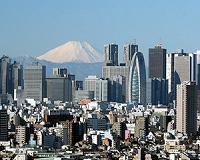 |
Cambridge, Mass. (UPI) Mar 24, 2011 U.S. astronomers say a pattern of X-ray "stripes" in the remnant of a supernova explosion could explain the source of cosmic rays. Observation of the Tycho supernova remnant with NASA's Chandra X-ray Observatory may provide the first direct evidence of a cosmic event that can accelerate particles to energies a hundred times higher than is achieved by the most powerful particle accelerators on Earth, a release from the Chandra X-Ray Center at Harvard University said. "We've seen lots of intriguing structures in supernova remnants, but we've never seen stripes before," said Kristoffer Eriksen, a researcher at Rutgers University who led the study. "This made us think very hard about what's happening in the blast wave of this powerful explosion." The Chandra data suggests magnetic fields can be dramatically amplified in such blast waves and that high-energy charged particles can bounce back and forth across the shock wave repeatedly, gaining energy with each crossing, leaving holes and dense walls -- the "stripes" -- in the magnetic field. "We were excited to discover these stripes because they might allow us to directly track, for the first time, the origin of the most energetic particles produced in our galaxy," said Eriksen. "But, we're not claiming victory yet." Supernova remnants have long been considered a good candidate for producing cosmic rays in our Galaxy. "Supernova remnants are our best cosmic laboratories for understanding how nature accelerates the highest energy cosmic rays," said Roger Blandford of Stanford University, who was not involved in the study. "These careful measurements provide a very strong clue as to what actually happens at these giant shock fronts."
Share This Article With Planet Earth
Related Links Space Technology News - Applications and Research
 Tokyo water unsafe for babies, food bans imposed
Tokyo water unsafe for babies, food bans imposedTokyo (AFP) March 24, 2011 Tokyo warned Wednesday that radioactive iodine over twice the safe level for infants had been detected in its tap water after Japan's massive earthquake crippled a nuclear plant. The revelation came after the United States barred imports of dairy and other produce from areas near the Fukushima power station, and as the Chinese territory of Hong Kong became the first Asian economy to follow s ... read more |
|
| The content herein, unless otherwise known to be public domain, are Copyright 1995-2010 - SpaceDaily. AFP and UPI Wire Stories are copyright Agence France-Presse and United Press International. ESA Portal Reports are copyright European Space Agency. All NASA sourced material is public domain. Additional copyrights may apply in whole or part to other bona fide parties. Advertising does not imply endorsement,agreement or approval of any opinions, statements or information provided by SpaceDaily on any Web page published or hosted by SpaceDaily. Privacy Statement |